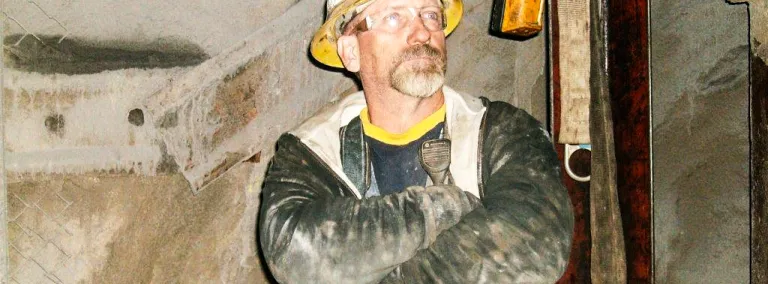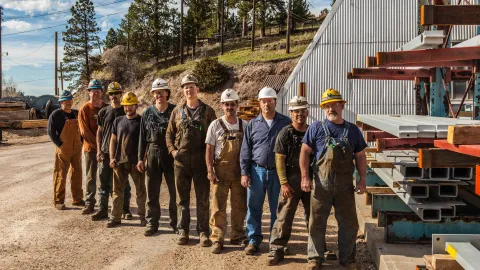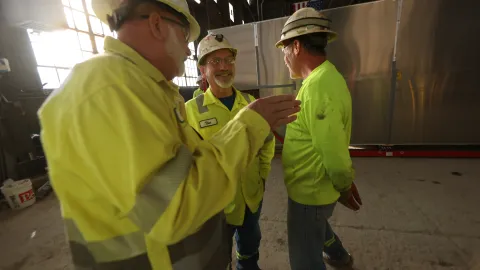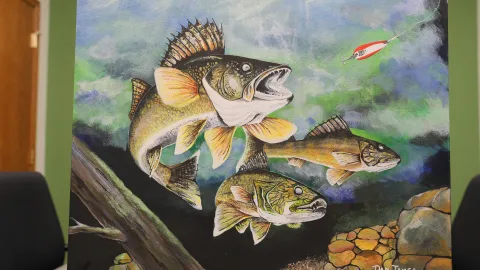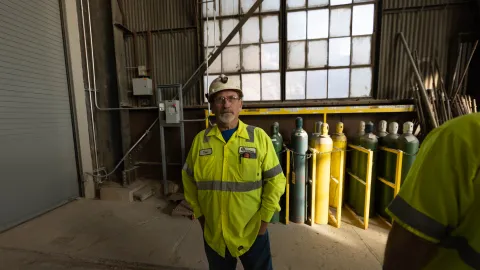The dog years are done — Dan James retires from SURF
Dan James, a 25-year employee of the former Homestake Mining Company who was instrumental in establishing SURF, has retired after spending more than four decades on the site.
There are few jobs on the planet more demanding than hard-rock underground mining.
Dan James spent 25 years cutting drifts and pulling ore out of the former Homestake Mine. He worked in almost every aspect of the underground operation, drilling, blasting, mucking, bolting, backfilling, cutting mainline drifts, running a jackleg, and laying rail. Ask him about those years underground and you’ll get a quick education on the language of the mining industry.
“When you mine, it’s like dog years,” James said. “If you mine for 30 years, you're like, 300 years old,” he added with a laugh. “I had about 12 years of high-ball drifting, first I was part of a high-ball drift crew then I ran a crew. We would blast every shift, muck out that rock, bolt it up, and drill and blast again, all in about a six-hour period. Back in those days to you were running 100 miles an hour to get it done, but it was a pretty good living.”
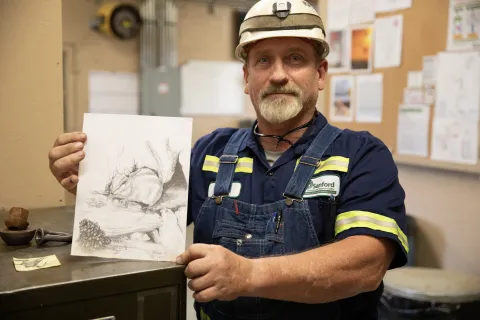
Photo by Matthew Kapust
That good living came with a price—James, like every former Homestake miner, stresses the value of safety. The decades he spent underground heightened his senses; phone calls—a sudden door slam—bumping into someone in a grocery store around the corner of an isle—can all be startling. This trait has led to some playful ribbing from his friends and coworkers.
“Everybody takes advantage of this, and everybody gets a big kick out of it,” James said with a smile. “It comes from being a miner and being down there with the rock that makes a lot of noise and breaks off and comes flying off at you. These experiences leave you a little jumpy.”
Following the closure of the former Mine, James spent a handful of years running his own construction business. He quickly accepted an offer to come back to the facility that would become SURF after it opened—his expertise in mining proved highly valuable in the establishment of America’s Underground Lab. He taught others many of the skills needed to work and survive underground; from running a jackleg to knowing the hollow sound unstable rock makes when you hit it with a steel bar.
“No matter what anybody tells you, there's safety issues you got to take care of, because with all that rock underground, the steel equipment; the softest thing down there is you. So, you got to pay attention to what you're doing and learn to be aware. I try to get people to realize that,” James said.
That situational awareness in dangerous spaces proved vital in the monumental effort of refurbishing the steel infrastructure of the Ross Shaft. James helped lead the initial crew that began the task of removing the old pipes and steel while installing the new beams that line the shaft from the surface to the 4850 Level.
“I was with the crews who put in the steel all the way down. But when we got to the 2700 Level, they asked me if I wanted to be a top lander instead of going down and doing the drilling and all that. I was over 60 years old, so I said, ‘yeah, I'll gladly go to the top,’” James said. As a “top lander” James took care of the needs on the surface for the crews working below—everything from loading supplies and equipment to answering the phone.
The change of pace allowed a little more time for other projects; shortly after moving to the surface, he completed a model of the Ross Shaft that is on display inside the hoistroom for visitors to see. This project was also an extension of his passion for art.
Dan spoke about his artistic endeavors in this 2018 interview with Erin Lorraine Woodward. His work draws inspiration from the Black Hills, where he grew up and plans to stay. The art he creates encompasses a range from wonderfully detailed pencil and ink drawings of wildlife to landscape paintings of the hills area, including some of the headframes at SURF. Creating more art is a big part of his plans forward in retirement.
“I’m going to build a studio in my shed until I complete an addition to my house with a new studio. This will give me space to do my artwork,” James said. Catching up on home maintenance and doing a little travel to visit family are also in the plans in the coming years. He looks forward to the idea of trading steel, rock, and heavy equipment for a canvas and brush inside a peaceful studio space. There is little doubt his legacy at SURF—including his efforts to champion and build a strong safety culture—will continue on alongside his enduring works of art.
